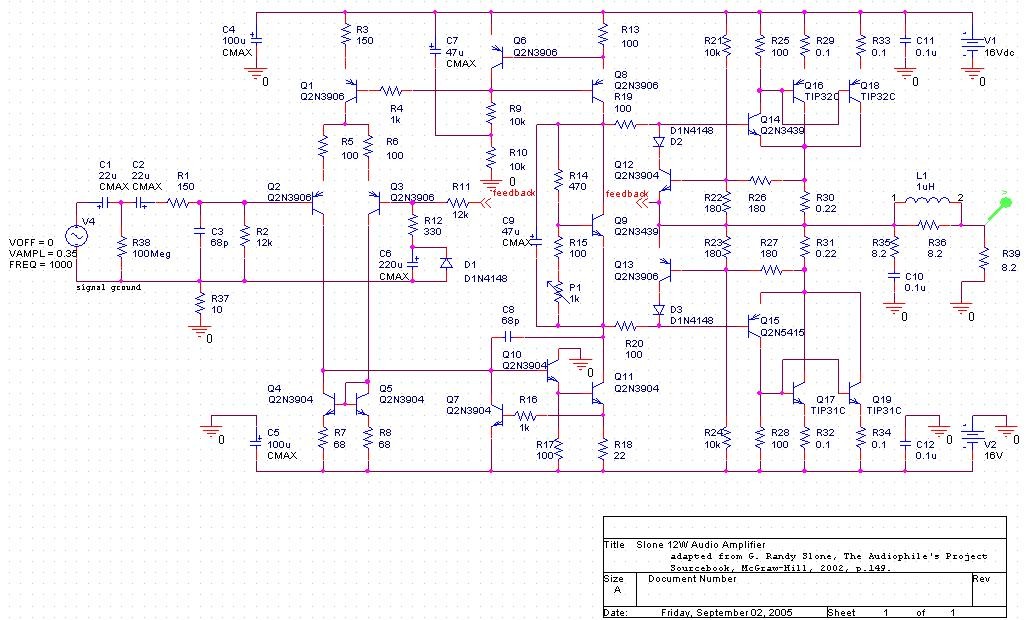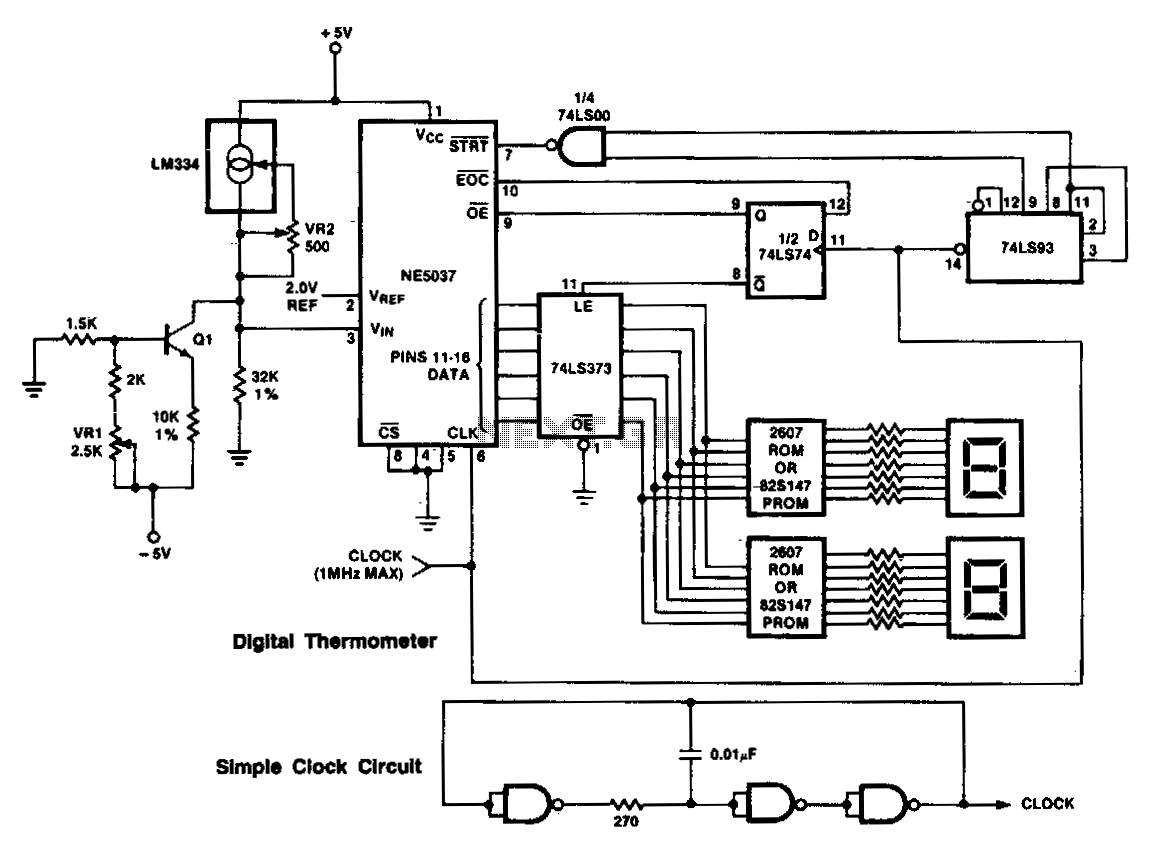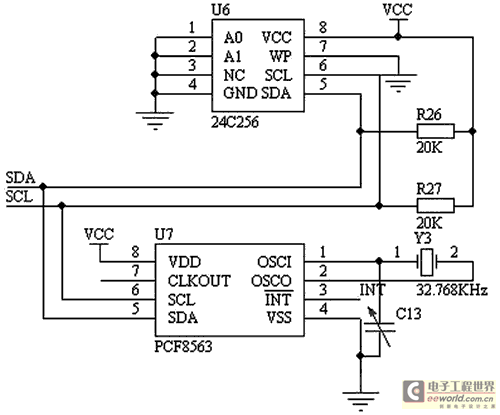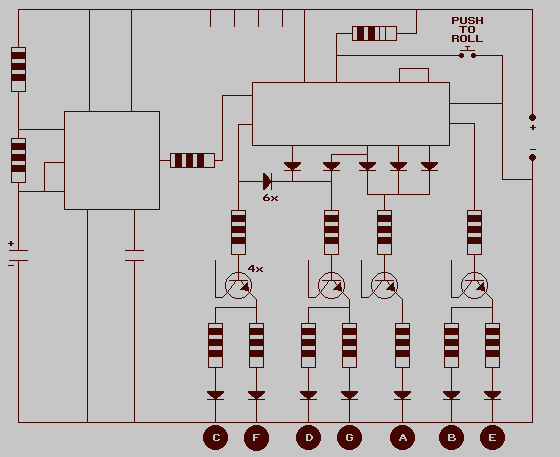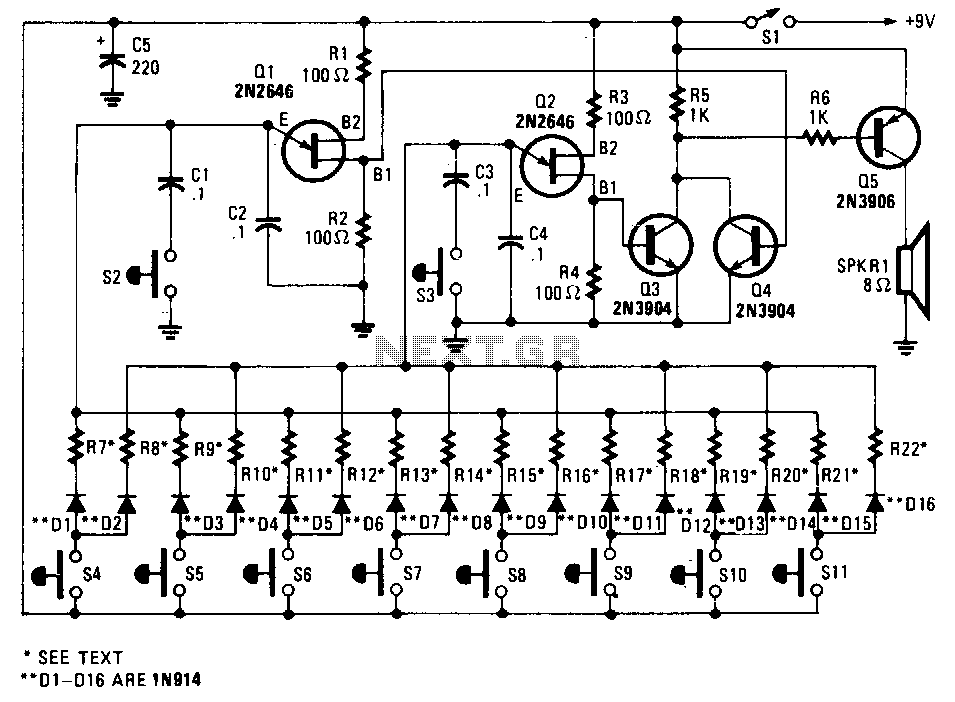
Electronic Ignition
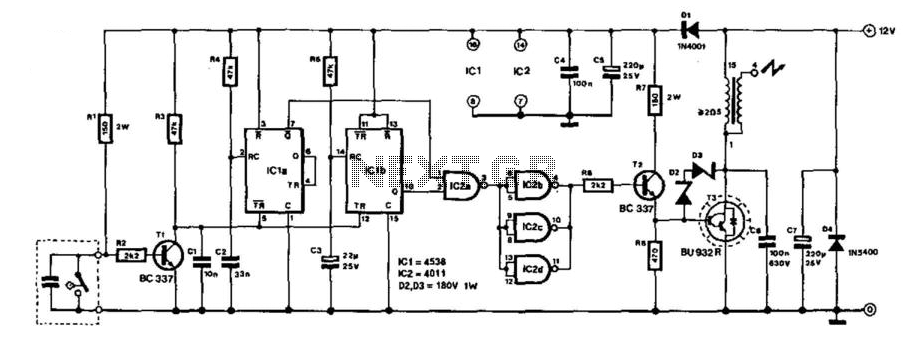
This electronic ignition circuit is designed to be integrated into a conventional car ignition system. It replaces the original 12-V switching circuit in the primary winding of the ignition coil with a circuit that generates over 100 V. This modification transforms a current circuit, which can be negatively impacted by lead and stray resistance, into a more efficient voltage circuit. The pulses generated from the contact breaker, located at the lower left side of the diagram, are directed to transistor T1 and differentiated by the resistor R3 and capacitor C1, resulting in a minimal ignition delay. The current flowing through the contact-breaker points is regulated by resistor R1, which is selected to keep the points clean. Following T1, two monostable multivibrators, IC1A and IC1B, are triggered by the output pulses from T1. IC1A is activated by the trailing edge of the pulse, while IC1B responds to the leading edge. Monostable IC1A generates a pulse of approximately 1.5 ms, determined by the resistor R4 and capacitor C2, which is sent to NAND gate IC2A. This gate disables high-voltage Darlington transistor T3 via gates IC2B, IC2C, and IC2D, as well as driver T2, for the duration of the pulse. Gate IC2 ensures that T3 is activated only when the engine is operational, preventing excessive current flow through the ignition coil. As long as pulses are produced by the contact breaker, IC1B is triggered, and its Q output remains high. The mono time for this stage is around 1 second, determined by R5 and C3. Darlington T3 is kept on via T2 and IC2A through IC2D as long as IC1A does not provide an ignition pulse. When the engine is off, the Q output of IC2B goes low after 1 second, causing T2 and T3 to deactivate. Two series-connected 180-V zener diodes are employed to protect the collector of the BU932R from excessive voltage. The Darlington transistor must be mounted on an appropriate heatsink.
This electronic ignition circuit provides a robust solution for enhancing the efficiency of a conventional car ignition system. By replacing the standard 12-V circuit with a high-voltage system, the ignition process is optimized, leading to improved engine performance. The use of transistors and integrated circuits allows for precise control over the ignition timing and minimizes ignition delay, which is crucial for maintaining engine efficiency and responsiveness.
The circuit's design incorporates several critical components that work together seamlessly. The initial pulse from the contact breaker is vital for triggering the ignition sequence. The differentiation stage, utilizing R3 and C1, ensures that the ignition timing is accurate, allowing for immediate response when the contact breaker is activated. The choice of R1 is significant, as it maintains the cleanliness of the contact points, which is essential for reliable operation and longevity of the ignition system.
The monostable multivibrators, IC1A and IC1B, play a crucial role in managing the timing of the ignition pulse. By responding to different edges of the input pulse, these components ensure that the ignition coil is energized at the optimal moment, enhancing combustion efficiency. The output from IC1A, which is carefully timed by R4 and C2, is critical for controlling the high-voltage Darlington transistor T3, ensuring that it is only activated when necessary, thus preventing unnecessary current draw when the engine is not running.
The protective measures integrated into the circuit, such as the zener diodes, are essential for safeguarding sensitive components from voltage spikes, which can occur during operation. Proper thermal management through the use of a heatsink for the Darlington transistor is also a vital consideration, as it ensures the reliability and durability of the ignition system under varying operational conditions.
Overall, this electronic ignition circuit design represents a significant advancement in automotive ignition technology, providing a more efficient and reliable means of igniting the fuel-air mixture within an engine, ultimately contributing to enhanced vehicle performance and reduced emissions. This electronic ignition circuit is intended to be inserted into a car"s conventional ignition system. In effect, it re places the original 12-V switching circuit in the primary winding of the coil by one generating more than 100 V. It thereby converts a current circuit, which is upset by lead and stray resistance, into a voltage circuit that is much more efficient.
The pulses emanating from the contact breaker, shown at the extreme lower left-hand side of the diagram, are applied to transistor T1 and subsequently differentiated by R3/C1. This causes a negligible ignition delay. The current through the contact-breaker points is determined by the value of R1. This value has been chosen to ensure that the points remain clean. Transistor T1 is followed by two monostables, IC1A and IC1B, which are both triggered by the output pulses of Tl.
However, whereas IC1A is triggered by the trailing edge, IC1B is triggered by the leading edge. Monostable IC1A passes a pulse of about 1.5 ms (determined by R4/C2) to NAND gate IC2A. This gate switches off high-voltage Darlington T3 via gates IC2B, IC2C and IC2D, and driver T2, for the duration of the pulse. Gate IC2 ensures that T3 is switched on only when the engine is running, to prevent a current of some amperes flowing through the ignition coil.
As long as pulses emanate from the contact breaker, IC1B is triggered and its Q output remains logic high. The mono time of this stage is about 1 s and is determined by R5/C3. Darlington T3 is switched on via T2 and IC2A through IC2D as long as IC1A does not pass an ignition pulse.
When the engine is not running, the Q output of IC2B goes low after 1 s and this causes T2 and T3 to be switched off. The two series-connected 180-V zener diodes protect the collector of the BU932R against too high of a voltage.
The Darlington must be fitted on a suitable heatsink. 🔗 External reference
This electronic ignition circuit provides a robust solution for enhancing the efficiency of a conventional car ignition system. By replacing the standard 12-V circuit with a high-voltage system, the ignition process is optimized, leading to improved engine performance. The use of transistors and integrated circuits allows for precise control over the ignition timing and minimizes ignition delay, which is crucial for maintaining engine efficiency and responsiveness.
The circuit's design incorporates several critical components that work together seamlessly. The initial pulse from the contact breaker is vital for triggering the ignition sequence. The differentiation stage, utilizing R3 and C1, ensures that the ignition timing is accurate, allowing for immediate response when the contact breaker is activated. The choice of R1 is significant, as it maintains the cleanliness of the contact points, which is essential for reliable operation and longevity of the ignition system.
The monostable multivibrators, IC1A and IC1B, play a crucial role in managing the timing of the ignition pulse. By responding to different edges of the input pulse, these components ensure that the ignition coil is energized at the optimal moment, enhancing combustion efficiency. The output from IC1A, which is carefully timed by R4 and C2, is critical for controlling the high-voltage Darlington transistor T3, ensuring that it is only activated when necessary, thus preventing unnecessary current draw when the engine is not running.
The protective measures integrated into the circuit, such as the zener diodes, are essential for safeguarding sensitive components from voltage spikes, which can occur during operation. Proper thermal management through the use of a heatsink for the Darlington transistor is also a vital consideration, as it ensures the reliability and durability of the ignition system under varying operational conditions.
Overall, this electronic ignition circuit design represents a significant advancement in automotive ignition technology, providing a more efficient and reliable means of igniting the fuel-air mixture within an engine, ultimately contributing to enhanced vehicle performance and reduced emissions. This electronic ignition circuit is intended to be inserted into a car"s conventional ignition system. In effect, it re places the original 12-V switching circuit in the primary winding of the coil by one generating more than 100 V. It thereby converts a current circuit, which is upset by lead and stray resistance, into a voltage circuit that is much more efficient.
The pulses emanating from the contact breaker, shown at the extreme lower left-hand side of the diagram, are applied to transistor T1 and subsequently differentiated by R3/C1. This causes a negligible ignition delay. The current through the contact-breaker points is determined by the value of R1. This value has been chosen to ensure that the points remain clean. Transistor T1 is followed by two monostables, IC1A and IC1B, which are both triggered by the output pulses of Tl.
However, whereas IC1A is triggered by the trailing edge, IC1B is triggered by the leading edge. Monostable IC1A passes a pulse of about 1.5 ms (determined by R4/C2) to NAND gate IC2A. This gate switches off high-voltage Darlington T3 via gates IC2B, IC2C and IC2D, and driver T2, for the duration of the pulse. Gate IC2 ensures that T3 is switched on only when the engine is running, to prevent a current of some amperes flowing through the ignition coil.
As long as pulses emanate from the contact breaker, IC1B is triggered and its Q output remains logic high. The mono time of this stage is about 1 s and is determined by R5/C3. Darlington T3 is switched on via T2 and IC2A through IC2D as long as IC1A does not pass an ignition pulse.
When the engine is not running, the Q output of IC2B goes low after 1 s and this causes T2 and T3 to be switched off. The two series-connected 180-V zener diodes protect the collector of the BU932R against too high of a voltage.
The Darlington must be fitted on a suitable heatsink. 🔗 External reference
